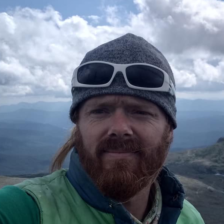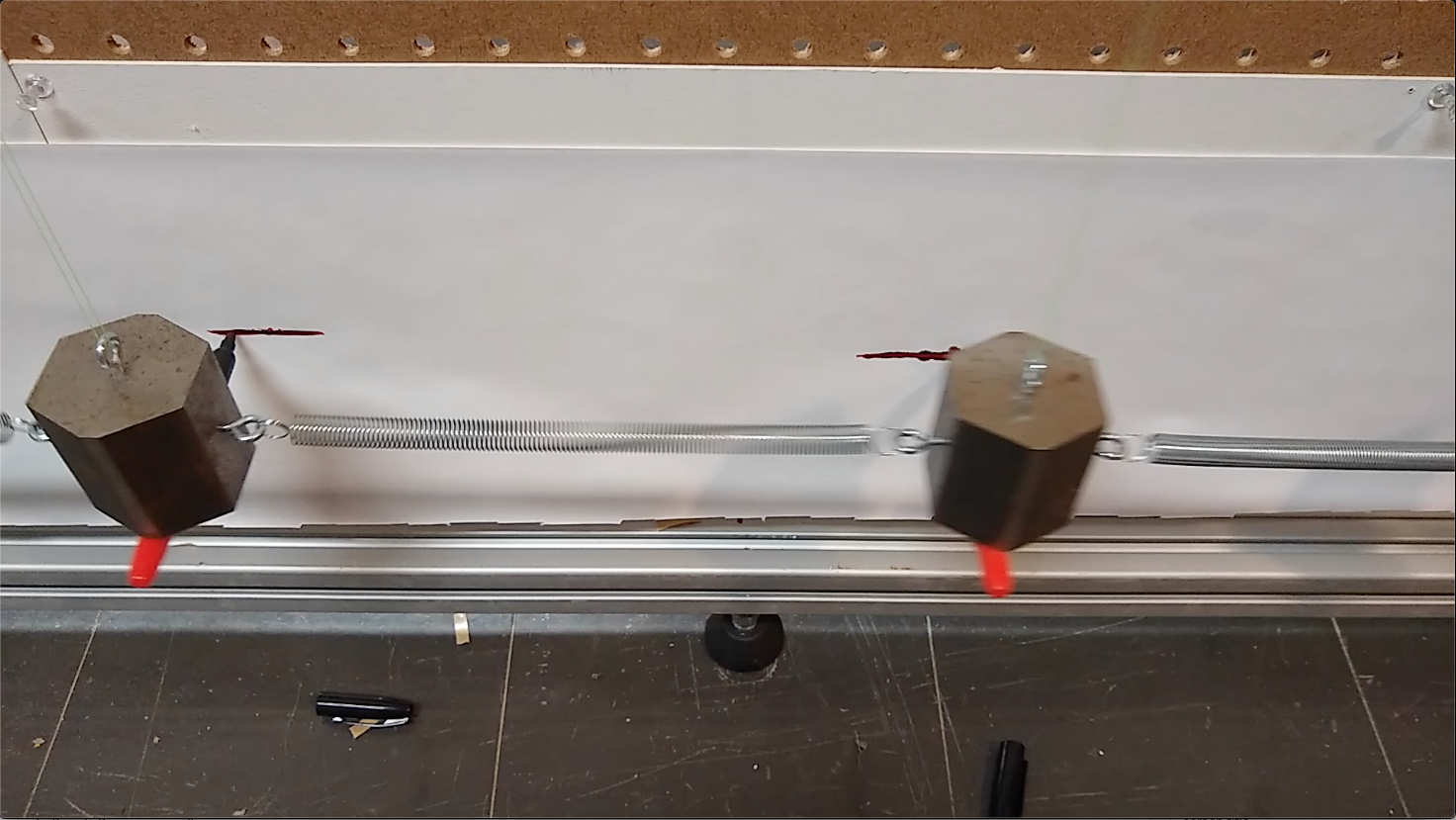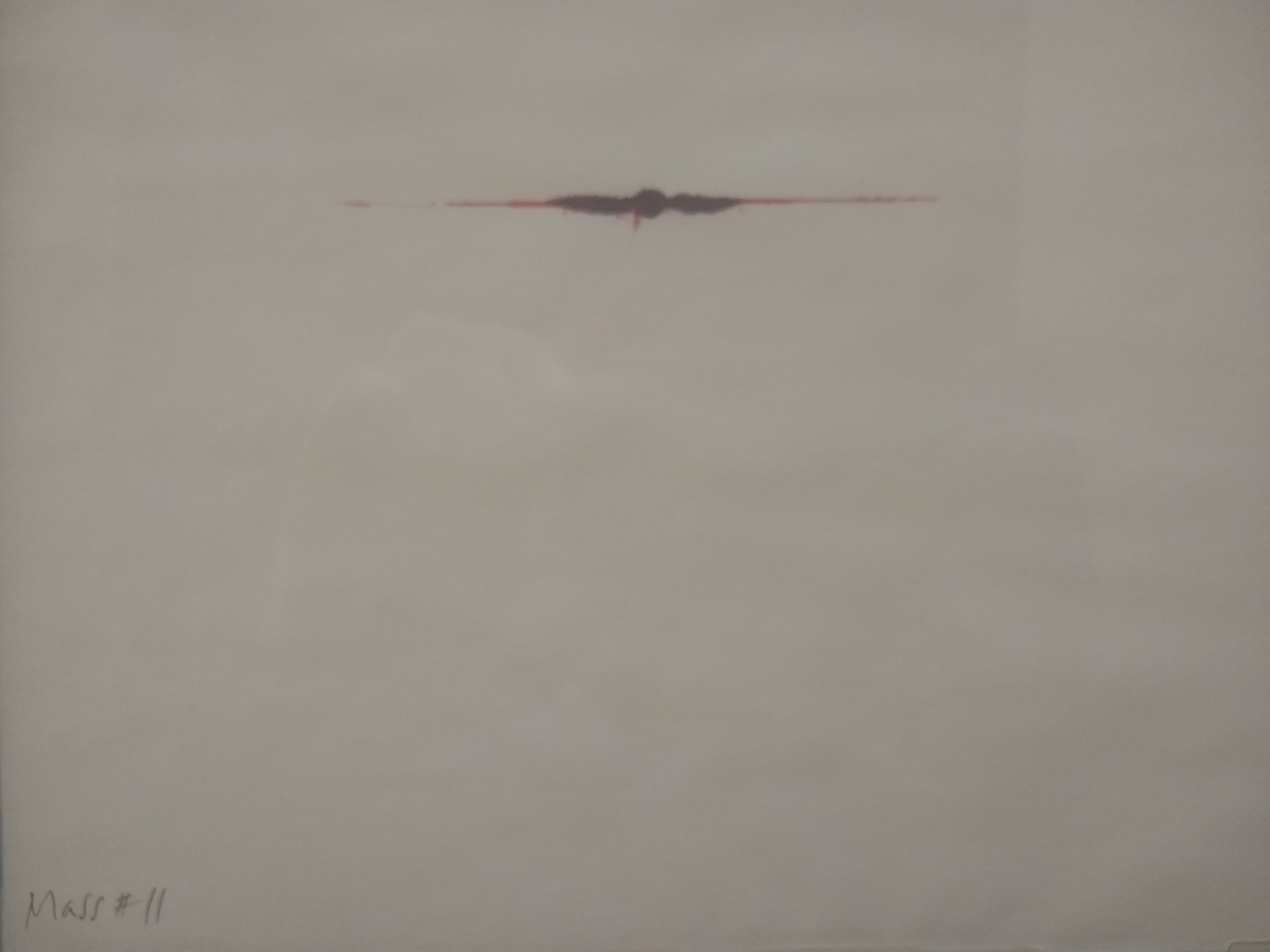From a particular perspective, there is no boundary between art and science.

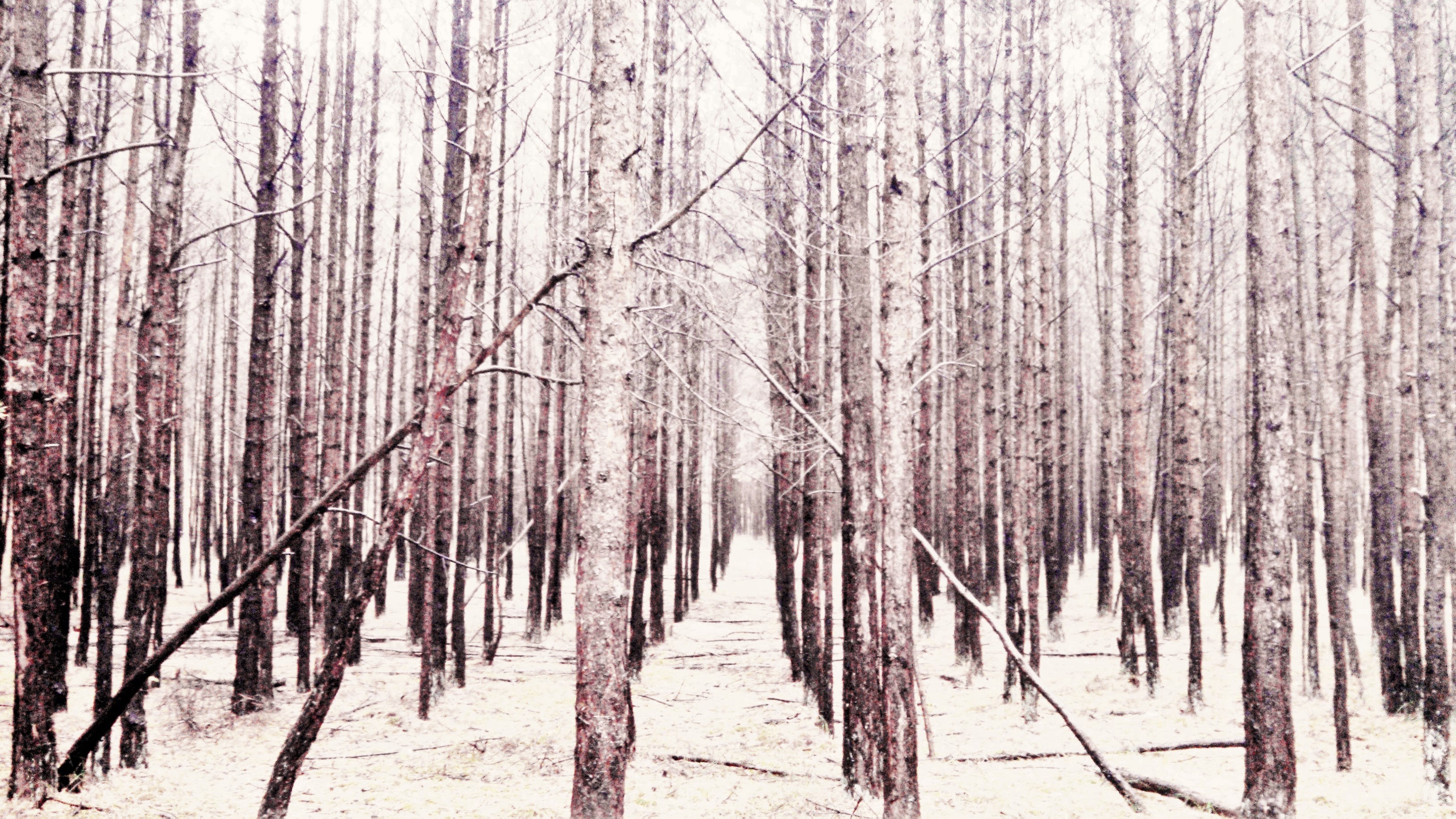
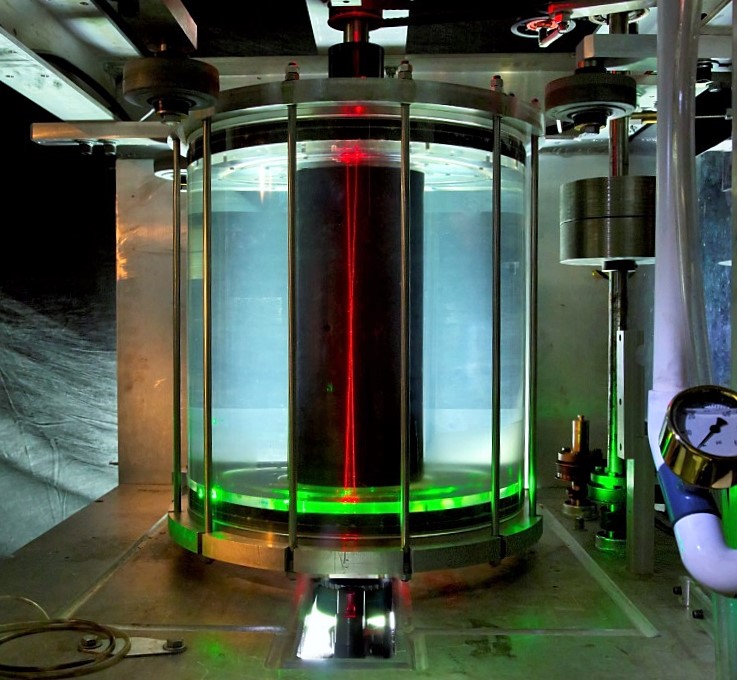
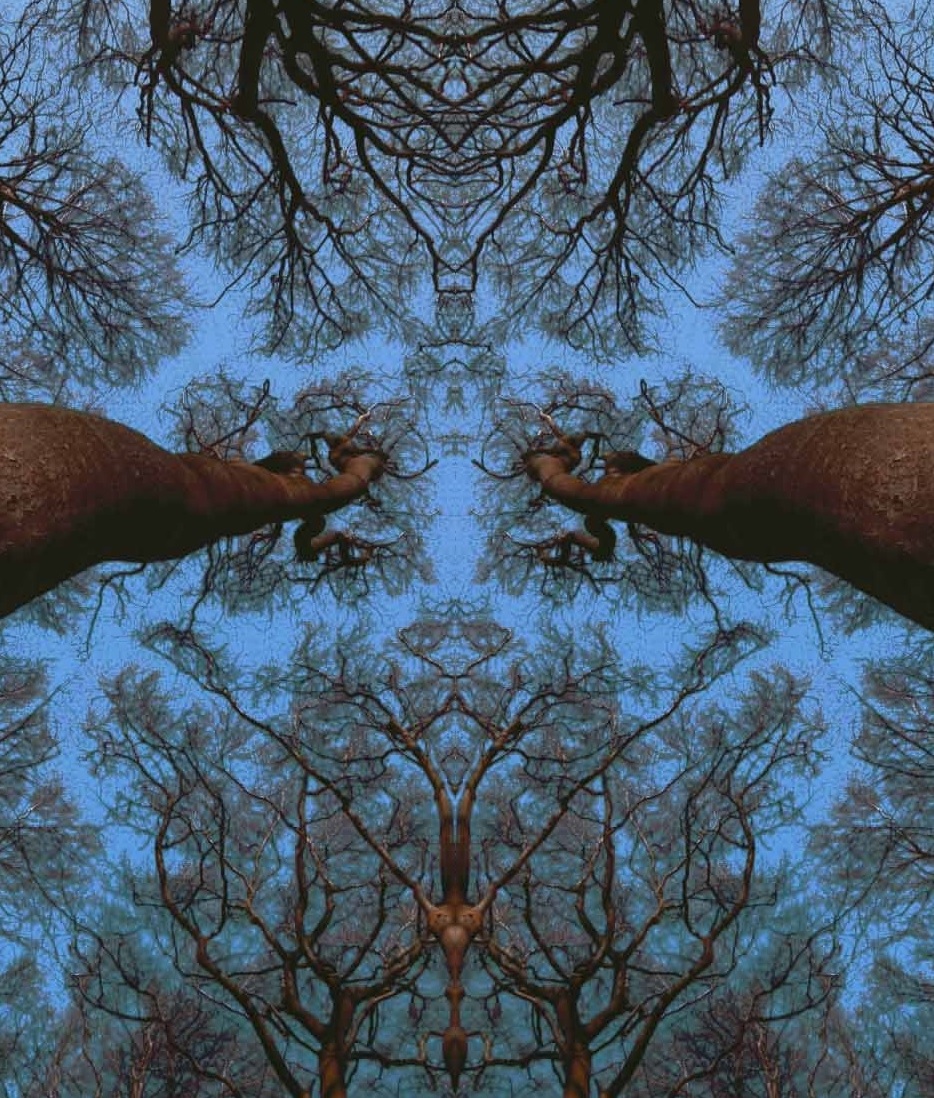
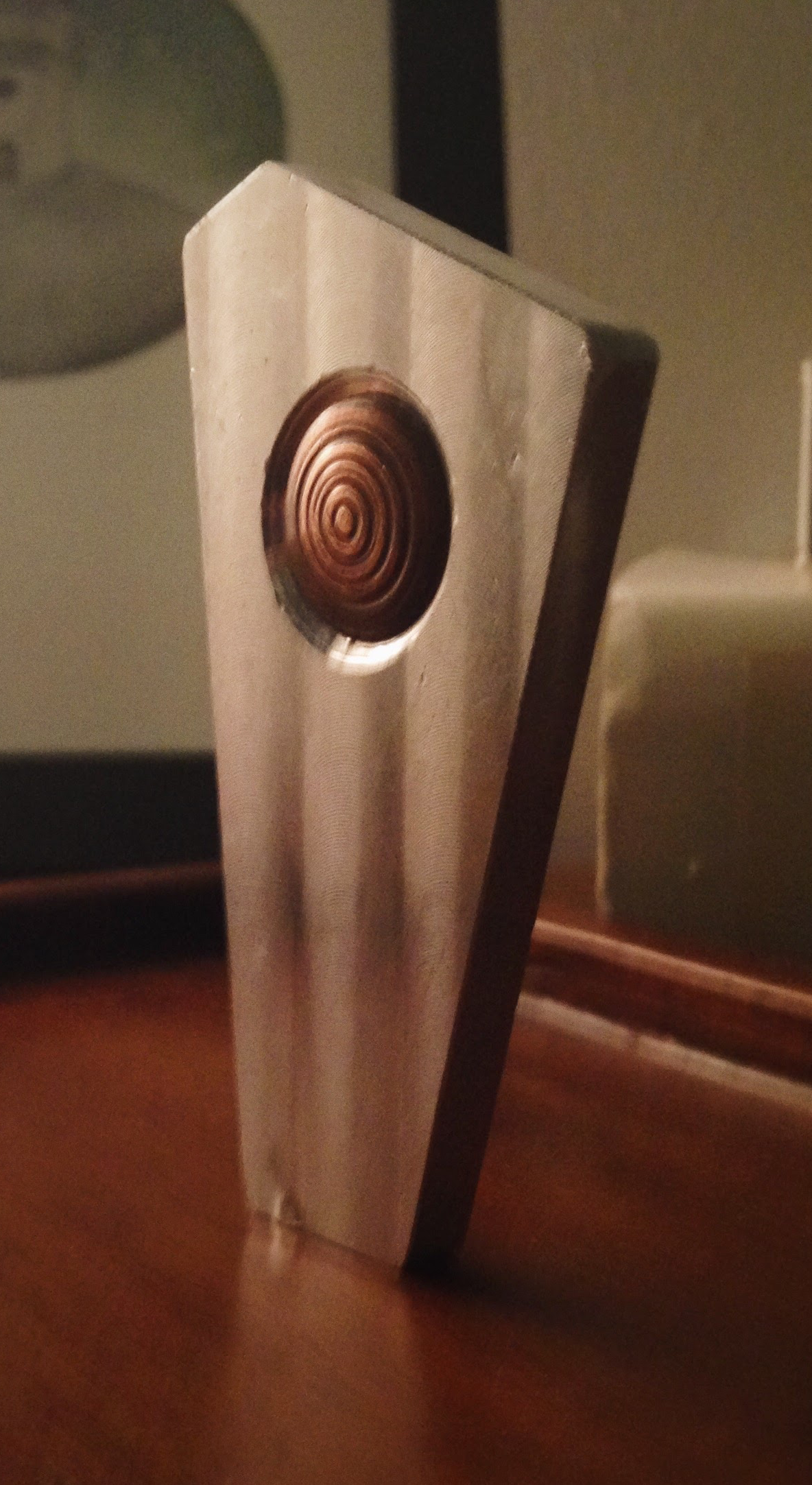
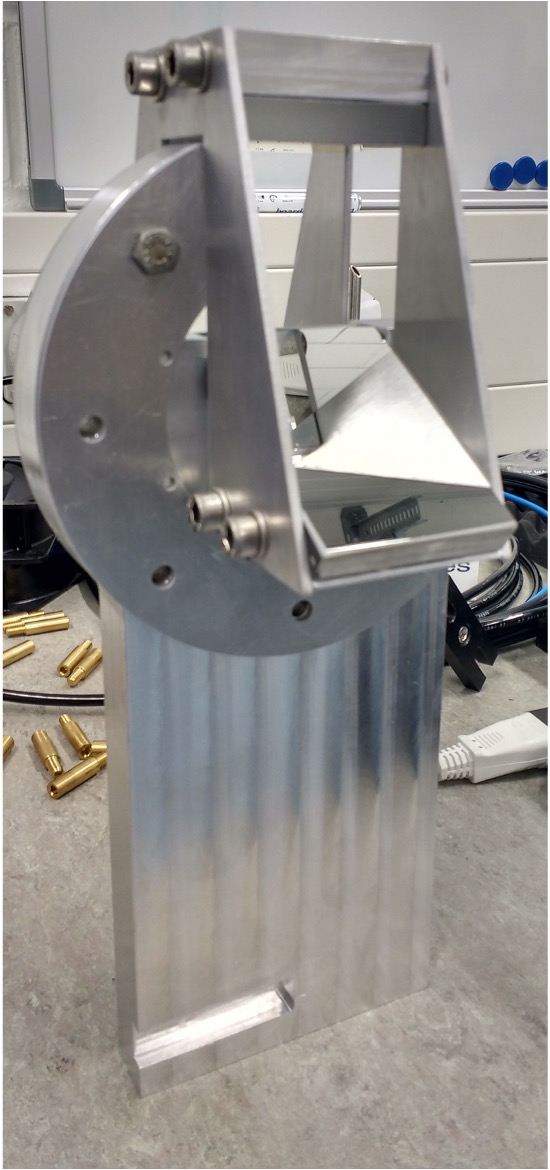
Measured Confluence, 2020
I participated in the Measured Confluence exhibition hosted at the Dowd Gallery from January-March of 2020 with three contributions. Two of these, Binary Processes and Forbidden Regions (with Jaroslava Prihodova), were art installations. The last was a panel discussion, with Robert Vlasak (Associate Professor of Natural Materials, Jan Evangelista Purkyne University, Czech Republic) and Jaroslava Prihodova (Dowd Gallery Director).
Binary Processes
An icon of laboratory work, the petri dish evokes images of scientists clad in lab coats, test procedures, hypotheses, and bubbling beakers. In this installation the petri dishes serve as frames for images created in red and green agar. Collectively, these images capture the processes of study and experimentation. Agar is a medium that is partly solid and sometimes fluid, simultaneously allowing and inhibiting. Visible to the eye are oxygen bubbles, voids frozen in space, a record of the wonderfully unexpected texture of exploration. Invisible to the eye are the microscopic cultures of photosynthetic algae suspended in the agar, each busily eating, dividing, dying, and contributing to a creation so vast and complex as to be inconceivable, and thereby invisible, to the individual.
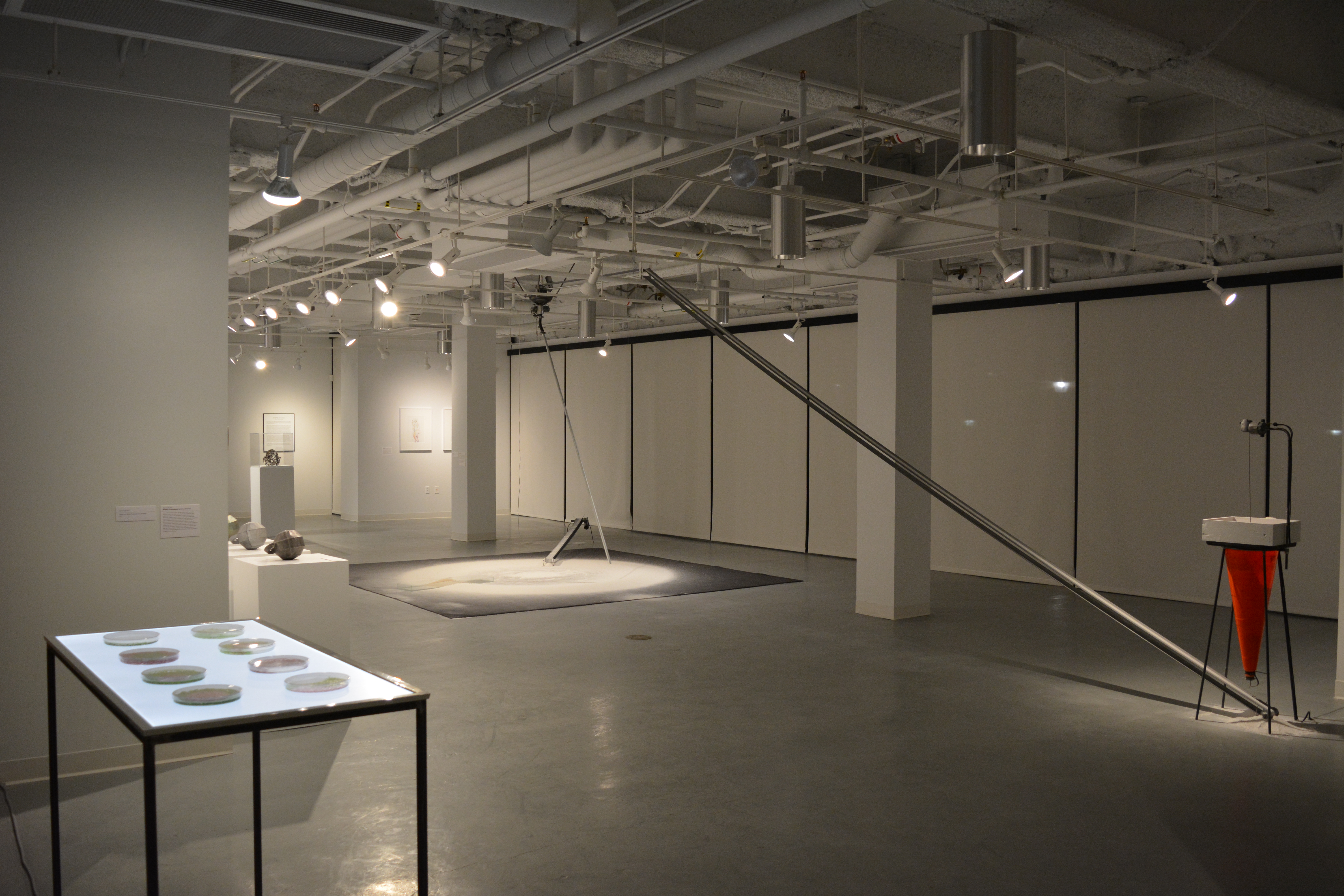
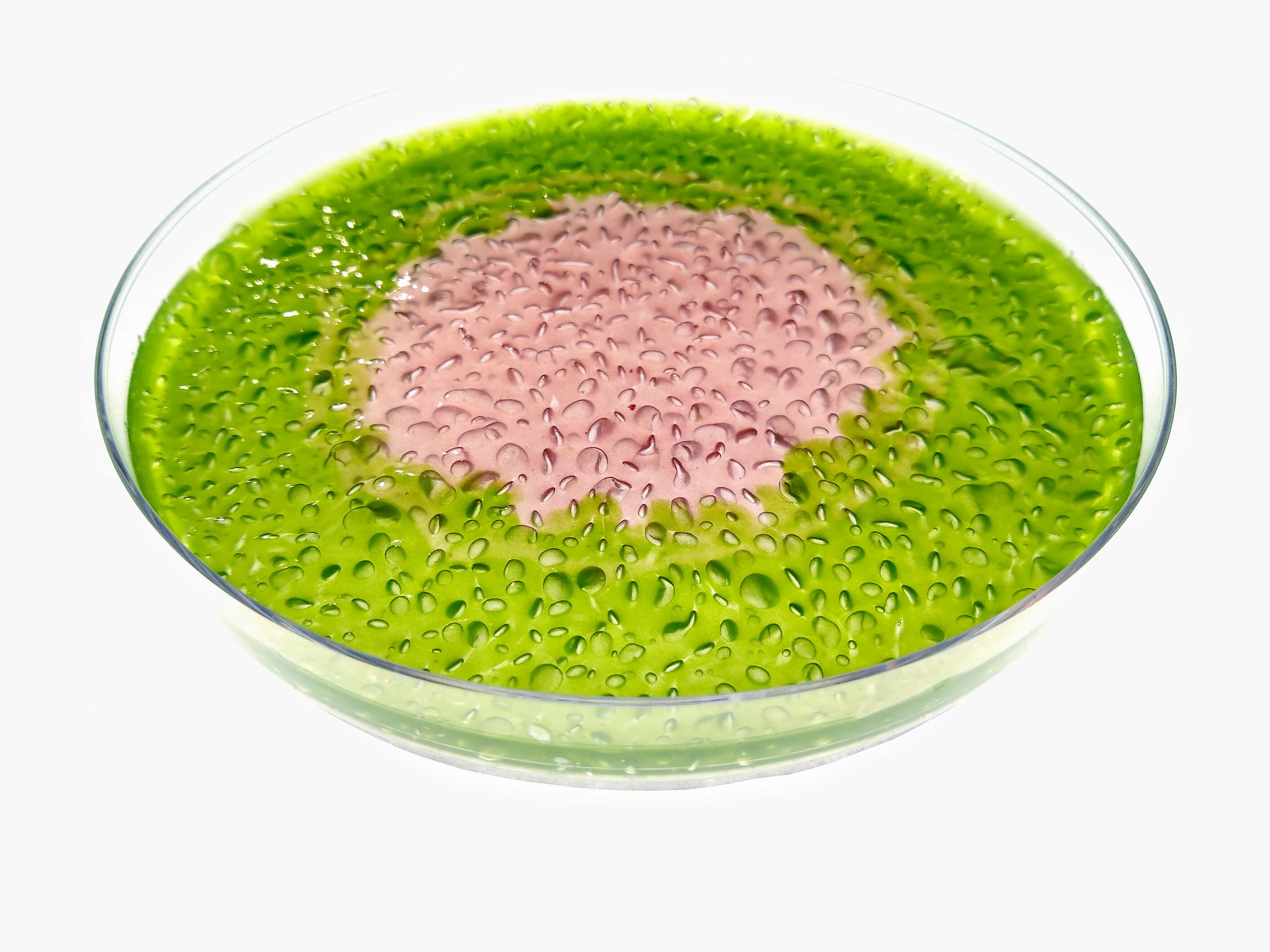
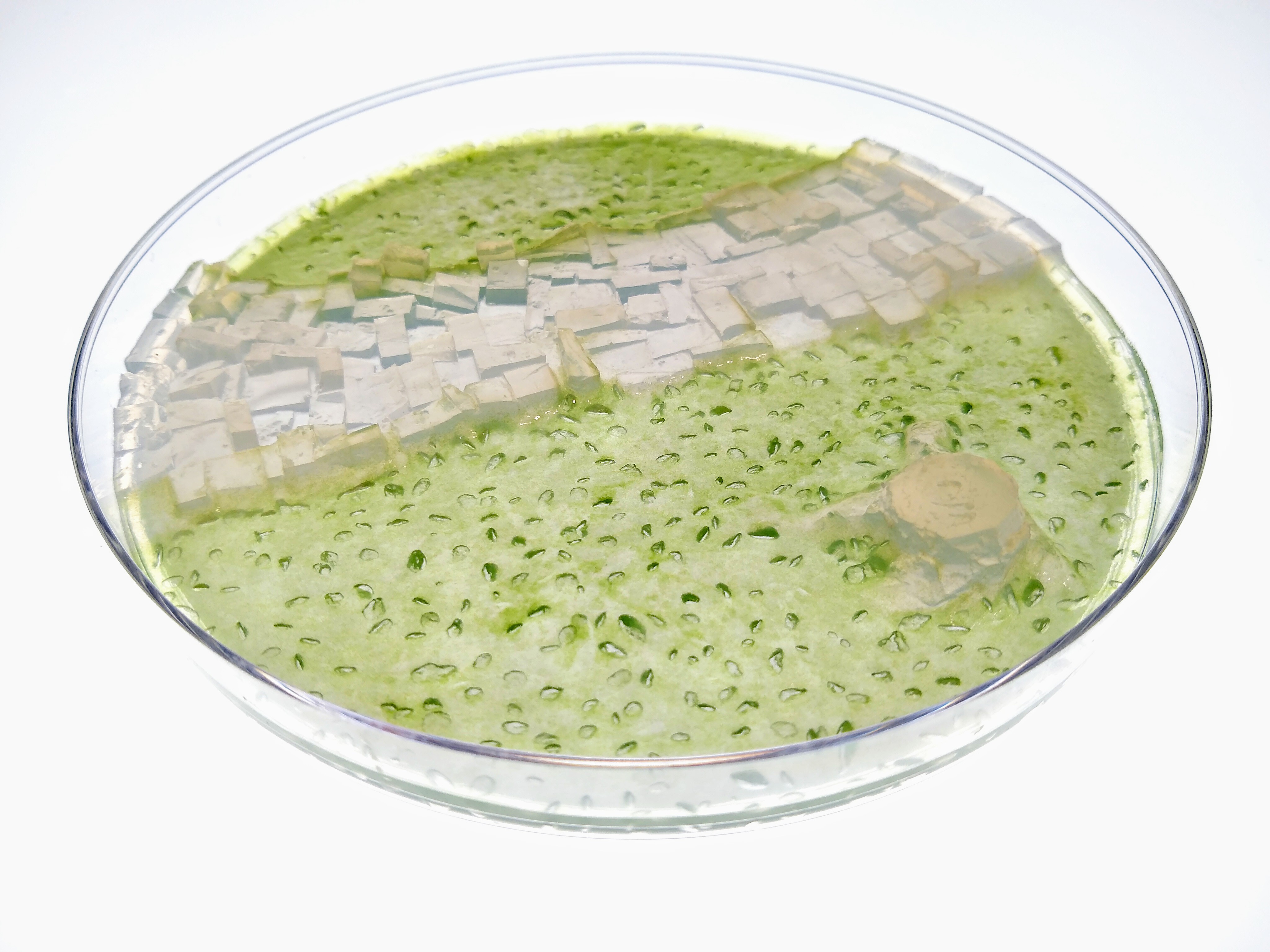
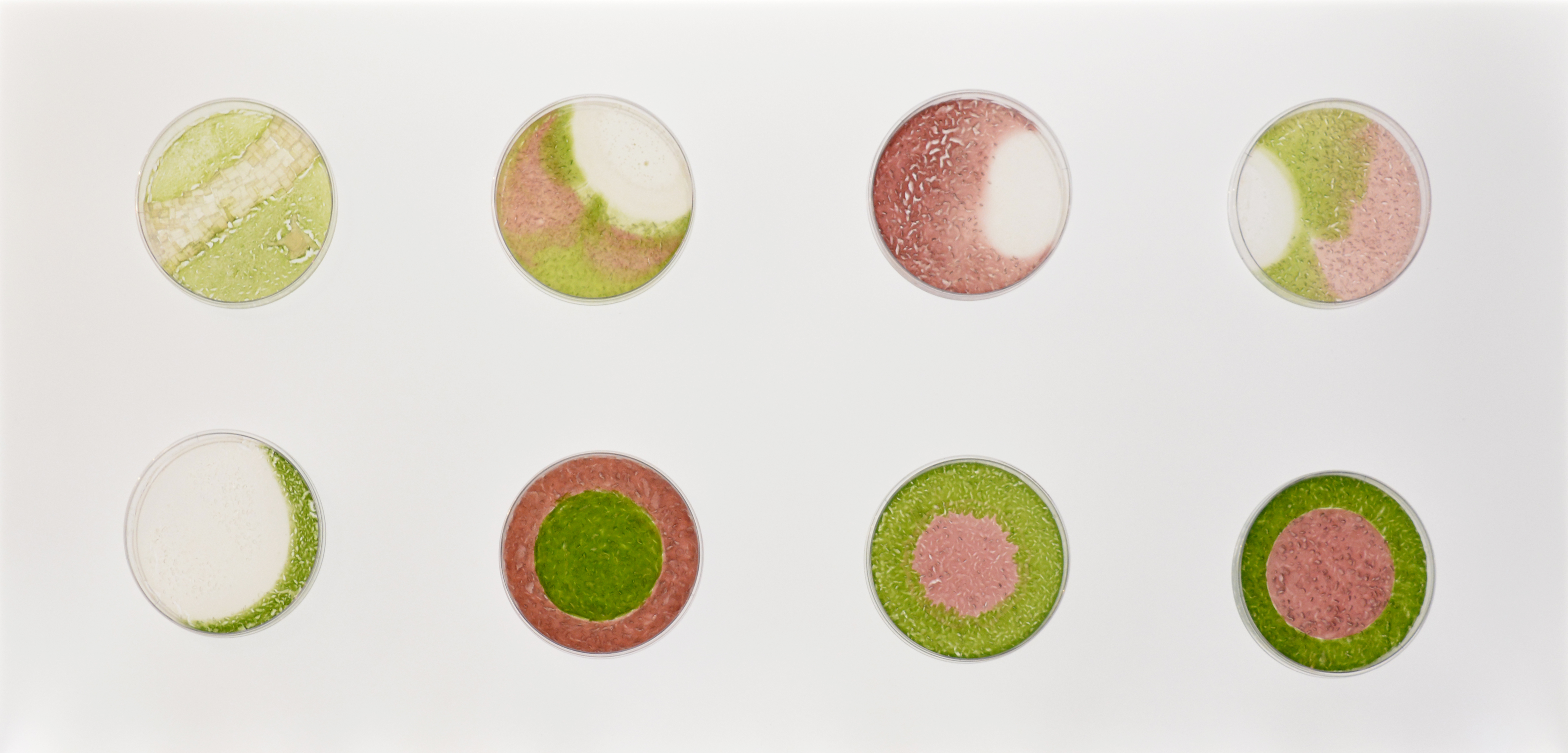
Forbidden Regions
In his collaboration on the Forbidden Regions installation with Jaroslava Prihodova, the artists presented crude line drawings generated with a mechanical apparatus from Dr. Edlund’s lab meant to demonstrate complex wave phenomena. These images served the dual purpose of quasi-scientific measurements and abstracted representations of intentional design. In this project, the artists were exploring the role of images as records, conveyors of meanings, describing the scientific study and the transference of ambition through a physical medium. As generalized objects of mechanical creation, these works inspired the artists to think about the nested layers of meaning that exist in all objects.
Panel Discussion
“For Dr. Eric Edlund the common theme in the works presented by himself, Jaroslava Prihodova, and Robert Vlasik in their panel discussion was the emphasis on machines as objects of inspiration and vision. In his own work on Wendelstein 7-X stellarator, a billion euro international collaboration in Germany, and in the table-top-scale hydrodynamic experiments he constructed in Princeton, Dr. Edlund sees machines as gateways to understanding the mysteries of the universe. These gateways lead parallel realities of fundamental truths emerging through a multi-layered process of abstraction and stories of the scientists who look upon these works as things of beauty designed under the principles of precision and efficiency. In Jaroslova Prihodova’s discussion of her father’s influence on her development as an artist through his lesson in the repair of lawnmowers and other mechanical apparatus, Dr. Edlund saw commonality with his own experiences – lessons beginning in childhood that led them to realize that the inner workings of machines are portals into the minds of their creators through which the power of creative enterprise was inherited. Robert Vlasak’s creations in a diverse range of mechanical devices, some resembling industrial factories in miniature, brought to mind the fact that all designs reflect purpose, and those that do so with precision craftsmanship and mastery over materials are in themselves a form communication more abstract and subtle than words, speaking to our values that support the existence of our societies.”
